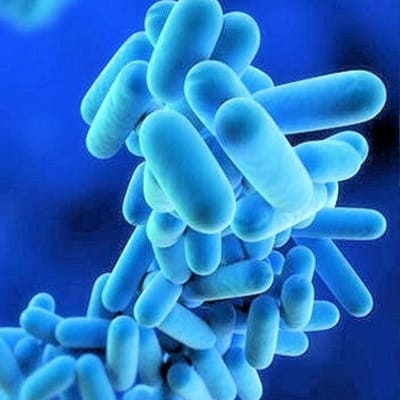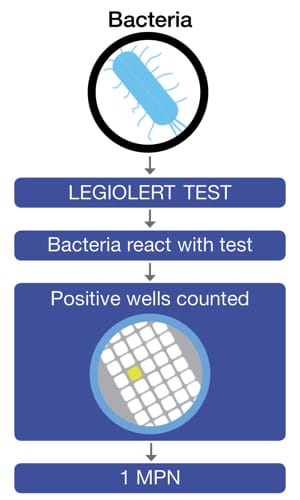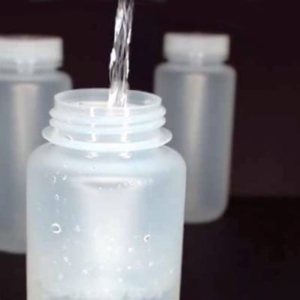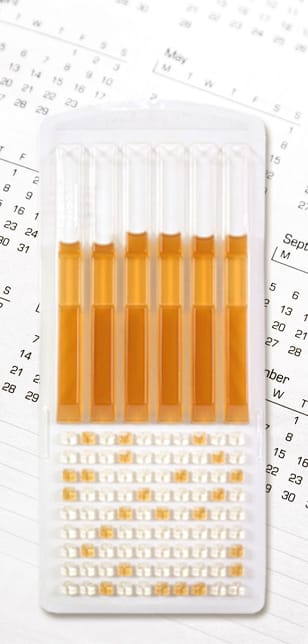PROTECT YOUR BUSINESS AND THE COMMUNITY FROM LEGIONNAIRE’S DISEASE
Be Proactive and make the Legiolert® Test a standard part of your safety plan
QCAnalytical now provides testing for Legionella pneumophila, the primary cause of Legionnaire’s disease. Being proactive and incorporating the Legiolert Test is your insurance policy to keep your facility safe. Feel confident with test results that are accurate and reproducible.
WHY TEST FOR LEGIONELLA PNEUMOPHILA?
Legionella pneumophila is the bacterial species that is the primary cause of Legionnaires’ disease, Pontiac fever and extrapulmonary infections known as legionellosis. Legionnaires’ disease is a severe and often lethal form of pneumonia. It is found in both potable and non-potable water systems. Typically it is acquired by inhaling airborne droplets from a contaminated water supply. Each year, an estimated 10,000 to 18,000 people are infected with the Legionella bacteria in the United States.
LEGIONELLA PNEUMOPHILA INFORMATION TO KNOW
Where has Legionella been found?
Legionella pneumophila bacteria are found naturally in the environment worldwide, usually in aquatic environments. The bacteria also occur in distribution systems and premise plumbing.
How are people exposed to Legionella pneumophila?
People are exposed to Legionella when they inhale water droplets containing the bacteria.
Legionella pneumophila can grow in water systems in the premise plumbing of:
- large buildings (consisting of hot water heaters, storage tanks and pipes)
- cooling towers
- decorative fountains
- hot tubs
How prevalent is Legionnaire’s Disease?
About 1 out of every 10 people who gets sick with Legionnaires’ disease will die due to complications from their illness.1 For those who get Legionnaires’ disease during a stay in a healthcare facility, about 1 out of every 4 will die.2
Since 2000, the United States has seen an 800 percent spike in the disease, according to the Centers for Disease Control and Prevention (CDC), with a reported 9,933 cases of legionellosis in 2018
REDUCE YOUR RISK WITH SCHEDULED TESTING
Detect Legionella pneumophila, the primary cause of Legionnaire’s disease with faster results! The Legiolert test provides:
- test results in 7 days, test reports returned in 10 days—faster than the traditional 14 days for test results
- detection of Legionella pneumophila, the most common type of Legionella species in building water
- detection of all serogroups of Legionella pneumophila and measures the amount of the pathogen
- results reported as Most Probable Number (MPN) per volume of sample which have been accepted as (equivalent to CFU per sample volume by the U.S. Environmental Protection Agency and other global regulatory agencies.
- globally recognized NF Validation by AFNOR Certification
HOW ARE WATER SAMPLES COLLECTED AND SENT?
- The water samples can be collected by the client and mailed to QCAnalytical Services. Upon request, water sample collection kits will be shipped to clients in advance.
- Depending on proximity to QCAnalytical lab location, samples may be collected by QCAnalytical Services Technicians.
WATER MANAGEMENT
Customized plans for each facility and must include thorough description and analysis of the building water systems, control measures, monitoring and plans for corrective action and
Confirmation/documentation.
The CDC toolkit (LINK HERE- Legionella_Management Plan) “Developing a Water Management Program to Reduce Legionella Growth & Spread in Buildings: A Practical Guide to Implementing Industry Standards” provides an overview for developing a plan including specific recommendations for healthcare facilities.
ESTABLISH A MANAGEMENT PLAN:
- Focusing detection and control efforts on Legionella pneumophila can increase the efficiency and efficacy of your water management plan.
- Routine monitoring is the best way to ensure your water management plan is effective.
- Routine testing is an essential part of measuring the effectiveness of a management plan to controlling a building’s risk for a Legionnaires’ disease outbreak.
- Accurate and reliable quantitative test results are required to understand where the greatest risks in your water system exist so they can be reduced.
- Understand the concentration and percentage of positive outlets of Legionella pneumophila throughout the system to gauge risk, ensure control measures are working and take remediation steps.
- Monitoring should be done over time to detect any increases in Legionella pneumophila, including increases from changes to the system (such as construction, water pressure changes, or water main breaks).
- Legionella pneumophila is virtually impossible to completely eradicate in complex water systems, but it can be effectively controlled through proper monitoring and control measures.
Resources
Visit the Legionella Testing section of the Resources page for additional documentation
Digital Guides




